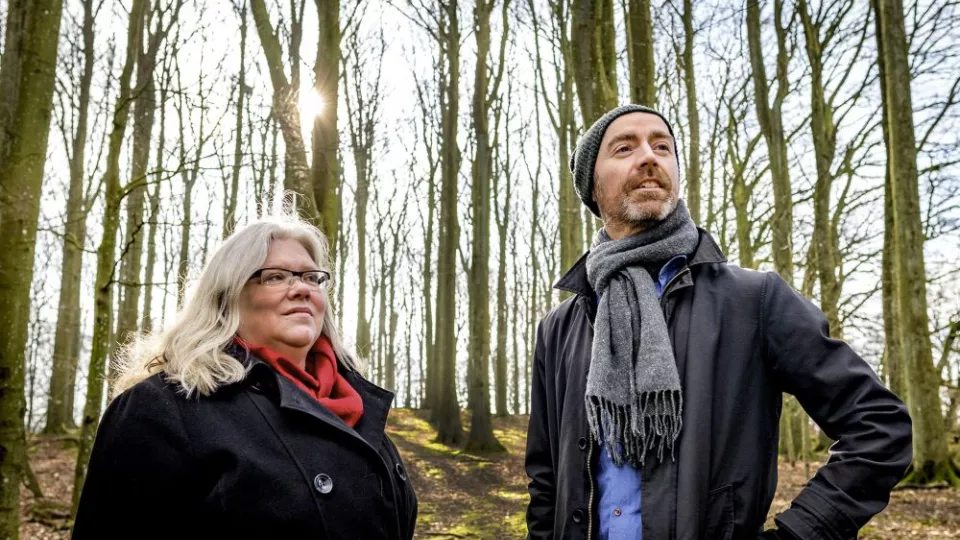By Nina Nordh
MERGE, ModElling the Regional and Global Earth system, is one of the strategic research areas at Lund University. More than one hundred researchers from five Swedish universities and the Swedish Meteorological and Hydrological Institute (SMHI) are together developing methods to better understand, above all, the interaction between the biosphere and climate change. Advanced computer models interlink knowledge from a variety of areas that concern our climate.
“Our focus is mainly on the biosphere and how it affects and is affected by the climate. We are trying to better understand the role of vegetation in the climate system”, says Paul Miller, one of the experts on climate models and coordinator of MERGE.
Biosphere refers to any part of the globe and its atmosphere where there is life. This is essential to all human existence as the biosphere supplies us with the oxygen we breathe and the food we eat. Between soil, ice, the oceans and other watercourses, and the atmosphere there are complex interactions that affect our climate. The broad outlines are known but there are still elements that researchers are trying to understand in order to better predict what will happen to the climate over the next hundred years.
Vegetation and land use affect the climate
In this context, the importance of further developing today’s climate models into Earth System Models (ESMs) is increasingly emphasised. The researchers use ESMs to better understand how the climate is affected by the carbon cycle in nature. ESMs are also used to understand how ecosystems on land are affected by global warming. Among other things, the researchers in MERGE are studying how vegetation and land use contribute to climate change through what are known as feedback mechanisms. For example, vegetation changes the physical properties of the land surface, e.g. how it reflects or absorbs radiation from the sun, which in turn affects the climate both locally and globally.
Particles mask the effect of climate change
Carbon dioxide and methane are the two gases in the atmosphere that contribute most to global warming, along with nitrous oxide and ground-level ozone, but also soot particles from combustion. Birgitta Svenningsson is deputy coordinator of MERGE and is conducting research at Lund University on how cloud formation is affected by particles in the air. The particles contribute to cloud formation, which in turn leads to changes in precipitation and cloud properties. The particles also prevent sunlight from reaching the ground, and have had the alarming effect of masking climate change to some extent. However, particles from combustion or similar processes have shorter lifetimes in the atmosphere and would disappear in a few weeks if we were to stop emitting them. Greenhouse gases such as carbon dioxide and methane, on the other hand, remain in the atmosphere significantly longer – methane for decades and carbon dioxide for centuries. This is also one of the reasons why it is so important that we reduce emissions from fossil fuels immediately.
Highlights the importance of particles for the climate
Birgitta Svenningsson says that MERGE’s contribution to research mainly has an experimental focus:
“In order to understand the particles’ impact on the climate, we are looking at everything from single water droplets to how air masses move between our field stations”, says Birgitta Svenningsson, explaining:
“Air pollutants such as soot particles may have a major impact on cloud formation locally. However, emissions of organic compounds from plants are even more significant globally.”
Plants not only bind carbon dioxide and emit oxygen through photosynthesis; many other substances are also emitted from the plants, especially from stress reactions, such as volatile carbonaceous substances, known as volatile organic compounds (VOCs).
“Nowadays we know that these substances are transformed into particles in the atmosphere, but not how they affect the climate”, says Birgitta Svenningsson.
Unique climate model
The researchers in MERGE combine experimental data from local-level studies with advanced ESMs, thereby improving the ability to predict the climate for larger areas in the next 100 years. The ESM used and developed by MERGE researchers, EC-Earth, was originally developed by a European consortium in which the MERGE partner SMHI was a driving force. Since then, MERGE partners in Lund have contributed by linking EC-Earth to the vegetation model LPJ-GUESS, developed by Professor Ben Smith at the Department of Physical Geography and Ecosystem Science at Lund University.
“Our model is unique in that it also takes the carbon cycle, VOCs, vegetation and land use into account for the first time – aspects that have a major impact on the climate”, says Paul Miller.
The sixth phase of a major international comparison project (CMIP6) is currently underway, coordinating experiments with the world’s foremost climate models. The results will be used in the IPCC’s 6th assessment report on the climate, to be published in 2022. In the report, the data from MERGE’s research on how the climate is affected by vegetation will be fully integrated, for the first time.

